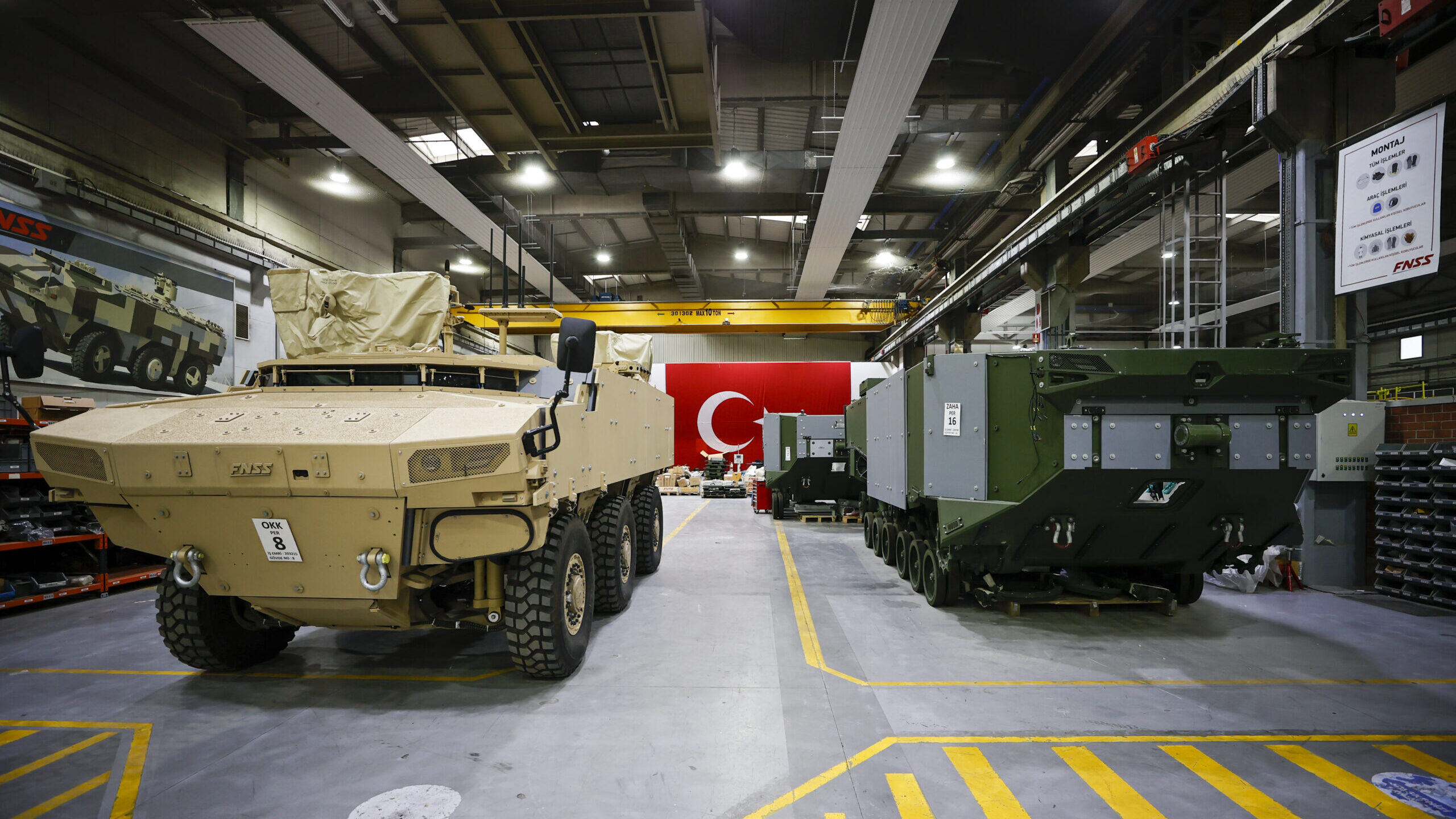A Directed Energy Maneuver-Short Range Air Defense (DE M-SHORAD) prototype on the move. (US Army/ Jim Kendall)
HUNTSVILLE, Ala. — High-energy laser testing against drones out in the Middle East is driving a new round of US Army prototyping with an eye towards better sustainability and, possibly, a lower power class for smaller vehicles and robots, according to a pair of senior service leaders.
This year the service has been testing a slew of directed energy weapons inside the US Central Command region, including a 50-kilowatt laser on Strykers dubbed the Directed Energy Maneuver Short-Range Air Defense (DE M-SHORAD) prototype and a 20-kilowatt Palletized High Energy Laser (P-HEL). While the service has remained relatively tightlipped on soldier feedback, it has disclosed challenges with the Stryker-based weapon and is moving ahead with a competition for a new vehicle-based prototype.
“We’ve worked with industry to increase reliability across a number of those systems,” Lt. Gen. Robert Rasch, the Director of Rapid Capabilities and Critical Technologies Office (RCCTO), told Breaking Defense Aug. 8.
“For the enduring high-energy laser, we believe — based on what we’ve seen and collected data – that industry is ready to produce systems that can reach the reliability levels and the affordability levels, to get in that group one through three [unmanned aerial system] UAS range,” the three-star general added.
The service is currently collecting industry white papers for that new effort, and if it secures adequate funding, Rasch said the service will host a “competitive” prototyping phase in fiscal 2025 before crowning an ultimate winner in FY26.
As for exactly what service is looking for, Rash said it’s not requiring options to be mounted on a specific vehicle but is “encouraging” companies to use the Joint Light Tactical Vehicle (JLTV) for the prototyping effort.
“We want the ability to put lasers on a variety of platforms [and] JLTV is a great example of one that’s pervasive in the force,” Rasch said. “We also want to be able to…take that off and put it on the ground for a [Forward Operating Base] FOB-type event.”
One future option, he added, includes adding such a laser onto unmanned ground vehicles like the Robotic Combat Vehicle (RCV).
“Is there a specific program plan for that right now? No, but that’s the future,” Rasch said. “Obviously with the RCV that we have today, [and] the [Small Multipurpose Equipment Transport] S-MET we have today, the amount of power required for that laser would absolutely create some challenges. But it’s not in the realm of the impossible, and I believe it absolutely will be in the future.”
RELATED: Army looks to limit early Robotic Combat Vehicle missions to keep soldiers out of harm’s way
As for the laser itself, the service is keeping its power options open, focusing instead on its fluence — a metric of energy delivered per unit — while also zeroing in on in-theater maintainability.
“When I talk to sustainment, I’m talking the ability to do maintenance on laser systems and with dusts and dirt, you have to have a sterile environment right now,” Army Space and Missile Defense Command head Lt. Gen. Sean Gainey told reporters Aug. 6.
“Instead of taking your [one smaller] part out … maybe you just replace that whole entire part, so you don’t have to take it into a clean room … that’s really the sustainability piece,” he added.
When it comes to the competition field, a host of companies already competing in the directed energy space are expected to line up for a spot on the program. That list includes BlueHalo, which has delivered several P-HELs to the service.
Jimmy Jenkins, the company’s president for the armed forces portfolio, told Breaking Defense he believes a 20-to-30-kilowatt class laser will likely be the sweet spot for the competition, and his company is already working to design more modular parts.
“For some components, like the optics, you still need a clean room,” he added. However, for other components, “we’ve made changes and you can do them right there on the front line.”











